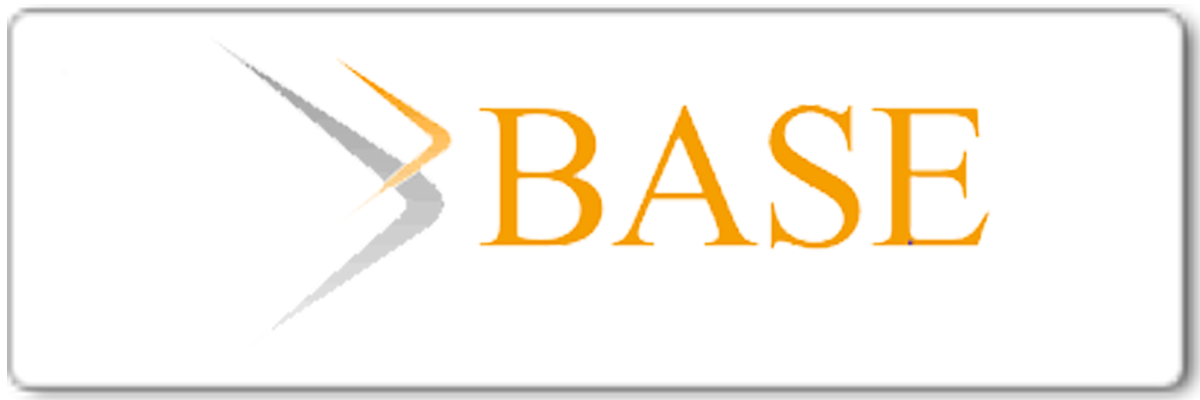Students’ Perception on Online Learning Experience During Pandemic (Covid-19)
Abstract
Keywords
Full Text:
PDF (English)References
Nadeak, B. (2020). The effectiveness of distance learning using social media during the pandemic period of covid-19: A case in universitas kristen indonesia. International Journal of Advanced Science and Technology, 29(7): 1764-1772.
Aliyyah, R. R., Rachmadtullah, R., Samsudin, A., Syaodih, E., Nurtanto, M., & Tambunan, A. R. S. (2020). The Perceptions of Primary School Teachers of Online Learning during the COVID-19 Pandemic Period: A Case Study in Indonesia. Journal of Ethnic and Cultural Studies, 7(2): 90-110.
Sari, P., Aini, L. N., Putri, A. F., & Ghozali, R. A. (2020). Persepsi Mahasiswa terhadap Metode Pembelajaran Blended Learning dengan Aplikasi WhatsApp Group pada Mahasiswa Insud Lamongan. Mudir: Jurnal Manajemen Pendidikan, 2(1): 20-36.
Rahman, N. A., Arifin, N., Manaf, M., Ahmad, M., Zin, N. M., & Jamaludin, M. (2020, March). Students’ Perception in Blended Learning among Science and Technology Cluster Students. In Journal of Physics: Conference Series (Vol. 1496, No. 1, p. 012012). IOP Publishing.
Stein, J., & Graham, C. R. (2014). Essentials for blended learning: A standards-based guide. Routledge.
Cronje, J. C. (2020). Towards a New Definition of Blended Learning. Electronic Journal of e-Learning, 18(2): 114-121.
Damanik, E. L. (2020). Blended Learning: An Innovative Approach on Social Sciences at Indonesian Higher Education. Education Quarterly Reviews, 3(1): 52-65.
Rasheed, R. A., Kamsin, A., & Abdullah, N. A. (2020). Challenges in the online component of blended learning: A systematic review. Computers & Education, 144: 103701.
Pratama, A. R., & Scarlatos, L. L. (2020). The roles of device ownership and infrastructure in promoting E-learning and M-learning in Indonesia. International Journal of Mobile and Blended Learning (IJMBL), 12(4): 1-16.
Ughade, P., & Badre, S. (2020). Blended Learning-A Study on Student’s Perception about Suitability of the Framework for Higher Education. The Online Journal of Distance Education and e-Learning, 8(2): 72-79.
Han, F., & Ellis, R. A. (2020). Initial development and validation of the perceptions of the blended learning environment questionnaire. Journal of Psychoeducational Assessment, 38(2): 168-181.
Yılmaz, Ö., & Malone, K. L. (2020). Preservice teachers perceptions about the use of blended learning in a science education methods course. Smart Learning Environments, 7(1): 1-21.
Firman, F., & Rahayu, S. (2020). Pembelajaran online di tengah pandemi covid-19. Indonesian Journal of Educational Science (IJES), 2(2): 81-89.
Sari, M. (2016). Blended learning, model pembelajaran abad ke-21 di perguruan tinggi. Ta'dib, 17(2): 126-136.
Du Toit, A., & Pool, J. (2020, August). Meeting Students’ Expectations of Blended Learning. In Proceedings of the 18th International RAIS Conference, August 17-18, 2020 (No. 001at). Research Association for Interdisciplinary Studies.
Poon, J. (2013). Multimedia education resource for learning and onlineteching (MERLOT) Blended learning: An institutional approach for enhancingstudents’ learning experiences. Journal of Online Learning and Teaching, 9(2): 271-288.
Vo, M. H., Zhu, C., & Diep, A. N. (2020). Examining blended learning implementation in hard and soft sciences: A qualitative analysis. International Journal of Research in Education and Science, 6(2).
Horzum, M. B., Kaymak, Z. D., & Gungoren, O. C. (2015). Structural equation modeling towards online learning readiness, academic motivations, and perceived learning. Educational Sciences: Theory & Practice, 15(3).
Zhang, Y. G., & Dang, M. Y. (2020). Understanding essential factors in influencing technology-supported learning: A model toward blended learning success. Journal of Information Technology Education. Research, 19: 489.
Sofiana, N. (2015). Implementasi blended learning pada mata kuliah extensive listening. Tarbawi: Jurnal Pendidikan Islam, 12(1).
Yuniarsih, Y., Hapsari, E. K., & Zakaria, M. (2020). Blended Learning Approach Using Flipped Classroom Model on Kaiwa Iii. Jurnal Kata: Penelitian tentang Ilmu Bahasa dan Sastra, 1: 28-34.
Som, H. M., Panah, E., & Ghazali, A. J. (2020). A study on student’s readiness towards blended learning methodology in University College of Yayasan Pahang (UCYP). Asian Journal of Research in Education and Social Sciences, 2(1): 1-14.
Rafiola, R., Setyosari, P., Radjah, C., & Ramli, M. (2020). The effect of learning motivation, self-efficacy, and blended learning on students’ achievement in the industrial revolution 4.0. International Journal of Emerging Technologies in Learning (iJET), 15(8): 71-82.
Chen, W. S., & Yao, A. Y. T. (2016). An empirical evaluation of critical factors influencing learner satisfaction in blended learning: A pilot study. Universal Journal of Educational Research, 4(7): 1667-1671.
Prifti, R. (2022). Self–efficacy and student satisfaction in the context of blended learning courses. Open Learning: The Journal of Open, Distance and e-Learning, 37(2): 111-125.
Alebaikan, R. A. (2010). Perceptions of Blended Learning in Saudi Universities (Doctoral dissertation, University of Exeter).
DOI: http://dx.doi.org/10.26737/jipf.v8i1.3312
Refbacks
- There are currently no refbacks.
Copyright (c) 2023 Yasmine Khairunnisa, Misbah Misbah, Dewi Dewantara, Surya Haryandi, Nurlaela Muhammad, Khaerus Syahidi, Mohd Ali Ibrahim

This work is licensed under a Creative Commons Attribution-NonCommercial 4.0 International License.
Publisher
Institute of Managing and Publishing of Scientific Journals
STKIP Singkawang
Jl. STKIP, Kelurahan Naram, Kecamatan Singkawang Utara, Kota Singkawang, Kalimantan Barat, Indonesia
Website: http://journal.stkipsingkawang.ac.id/index.php/JIPF
Email: [email protected]
JIPF Indexed by:
Copyright (c) JIPF (Jurnal Ilmu Pendidikan Fisika)
ISSN 2477-8451 (Online) and ISSN 2477-5959 (Print)































